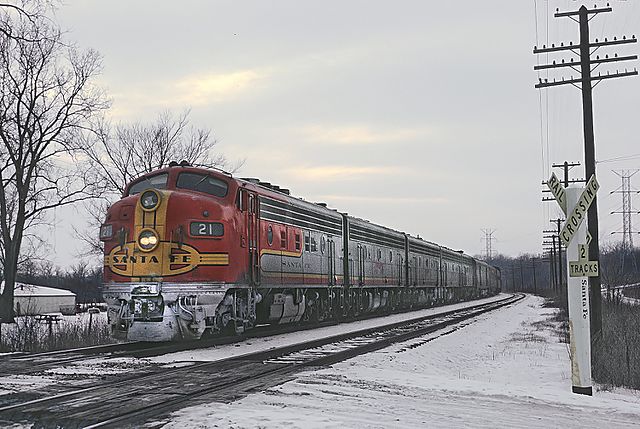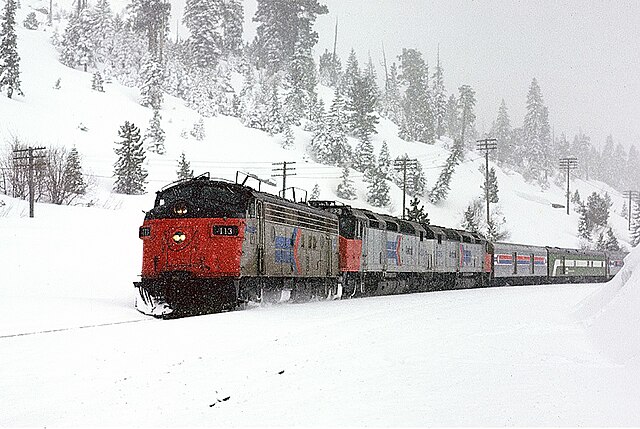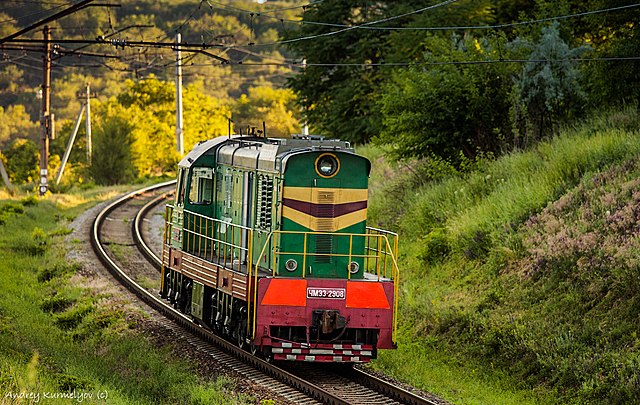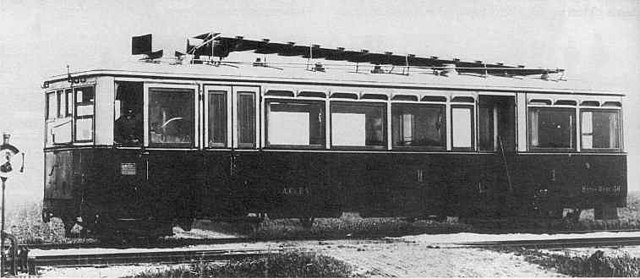EMD F-units are a line of diesel-electric locomotives produced between November 1939 and November 1960 by General Motors Electro-Motive Division and General Motors-Diesel Division. Final assembly for all F-units was at the GM-EMD plant at La Grange, Illinois, and the GMDD plant in London, Ontario. They were sold to railroads throughout the United States, Canada and Mexico, and a few were exported to Saudi Arabia. The term F-unit refers to the model numbers given to each successive type, all of which began with the letter F. The F originally meant "fourteen", as in 1,400 horsepower (1,000 kW), not "freight". Longer EMD E-units for passenger service had twin 900-horsepower (670 kW) diesel engines. The E meant "eighteen" as in 1,800 horsepower (1,300 kW). Similarly, for early model EMD switchers, S meant "six hundred" and N meant "nine hundred horsepower".
ATSF EMD F units on the San Francisco Chief in 1967
Amtrak #113, an EMD FP7, leading two EMD SDP40Fs with the San Francisco Zephyr at the Yuba Gap, 1975.
Image: Santa Fe FT locomotive 1941
A diesel locomotive is a type of railway locomotive in which the power source is a diesel engine. Several types of diesel locomotives have been developed, differing mainly in the means by which mechanical power is conveyed to the driving wheels. The most common are diesel-electric locomotives and diesel-hydraulic.
The ČKD ČME3, a common example of a diesel shunting locomotive
The InterCity 125 set a speed record – 148 mph (238 km/h) – for a diesel-powered train in 1987. Capable of 125 mph (201 km/h) in regular service, the train consists of two power cars with either seven or eight carriages between them.
These locomotives operated by Pacific National in Australia show three styles of diesel locomotive body: cab unit (front), hood unit, and flat-nose (rear).
Petrol–electric Weitzer railmotor, first 1903, series 1906







